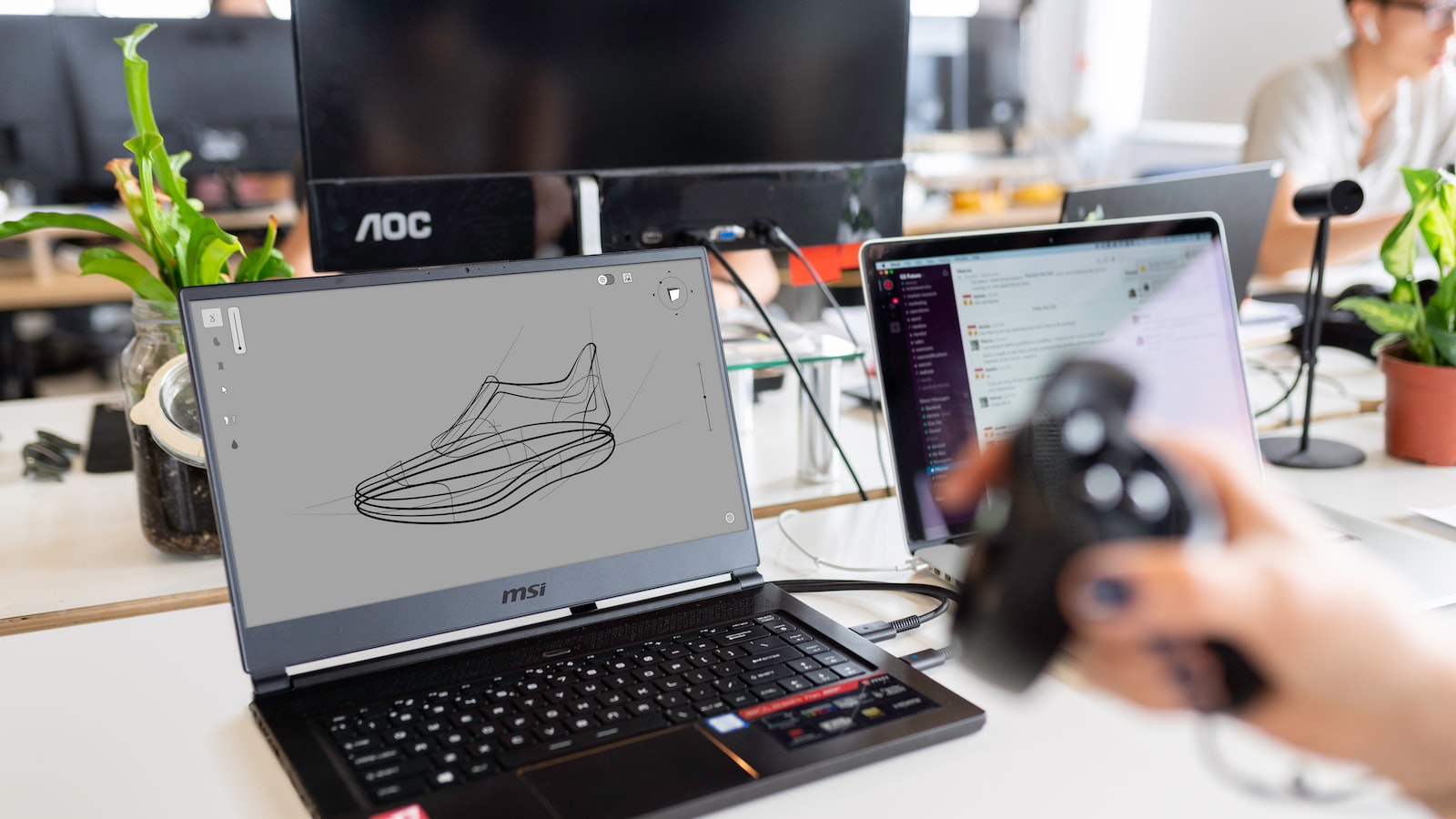
Can Smart Wearables Monitor Blood Pressure?
Are you looking to monitor your blood pressure but are having trouble finding a way to do it without frequent trips to the doctor? Smart wearables can help! This article will explain how smart wearables can be used to accurately measure your blood pressure and keep track of it. Keep reading to learn more!
List of Content
- 1. What Is a Smart Wearable?
- 2. How
- 3. Benefits of Smart Wearable Technology for Blood Pressure Monitoring
- 4. Potential Risks of Smart Wearable Blood Pressure Monitoring
- 5. Recent Developments in Smart Wearable Technology
- 6. The Future of Smart Wearable Blood Pressure Monitoring
- You Ask, I answer

1. What Is a Smart Wearable?
A Smart Wearable is an electronic device you can wear on your body. This type of device can communicate with and/or control other electronic devices, often via bluetooth. They are typically used for data capture, health tracking, gaming, notifications, and to provide access to a digital assistant.
Types of Smart Wearables
- Smart Watches: come in a variety of designs and offer features such as activity tracking, music control, messaging alerts and access to digital assistants.
- Smart Glasses: this device has lenses connected to a miniature display, a camera, sensors and other electronics. It can be used for augmented reality, notifications, virtual reality and access to a digital assistant.
- Fitness Trackers: these devices are designed to measure physical activity levels like heart rate, steps taken, calories burned and sleep quality.
- Smart Clothing: fitness apparel that contains sensors in the fabric that measure body temperature, sweat, heart rate, and other biometric data.
Benefits of Smart Wearables
Smart wearables can provide a range of benefits, such as aiding in fitness and health monitoring, providing access to digital assistance without having to use your phone, tracking sleep patterns, increasing productivity through notifications and alerts, and even providing entertainment via interactive gaming.
Drawbacks of Smart Wearables
Due to their technology, smart wearables can be vulnerable to hacking and data breaches, which can be an issue depending on the type of information they are collecting. Additionally, they may require additional hardware and/or additional expenses for continuous use over time, as well as regular charging. Smart wearables can also be uncomfortable to wear, especially for extended periods of time.

2. How
Smart wearables such as fitness trackers have the ability to monitor and collect data from several body metrics, making it possible to monitor our health. As a result, they can also be used to monitor blood pressure.
The process of obtaining a blood pressure reading with wearables is straightforward. A cuff is usually attached to the user’s wrist, and it measures each heartbeat and the time between each heartbeat. By analyzing this data, a reliable estimation of blood pressure can be obtained.
Advantages of Smart Wearables
- They’re convenient and portable.
- They enable users to track blood pressure continuously.
- They continuously save and store the data.
- They are more accurate than a manual blood pressure cuff.
Limitations of Smart Wearables
- They require lots of investments in research and development.
- Users may find it difficult to switch to wearables from traditional blood pressure monitoring devices.
- The accuracy of the readings depends on the device’s capability and the user’s body type.
3. Benefits of Smart Wearable Technology for Blood Pressure Monitoring
Real-Time Monitoring: Smart wearable technology makes blood pressure monitoring easier and efficient. It has fine-tuned sensors that provide real-time data like diastolic and systolic pressure levels. This data collected can be forwarded to a physician so they can take appropriate steps to prevent any health issues. Also, it can alert users when something is going wrong in the blood pressure levels.
Accurate Results: Smart wearable technology is designed to monitor and record your blood pressure levels. This data can be used to diagnose any health issues in the early stages and begin to take prompt measures to correct them. The accuracy of the results gives patients a sense of comfort and peace of mind.
Helpful For People At Risk: Smart wearable technology provides the best way to monitor your blood pressure levels if you are at risk. Hypertension is a serious condition that requires monitoring throughout the day. Smart wearables like watches, bracelets, and rings provide the best results in real-time monitoring. This technology can help you stay ahead from critical conditions like heart attack, stroke, and kidney disease.
Improve Performance: Smart wearable technology helps improve performance made by tracking your daily activities. You can quickly set a goal for your daily physical exercise and heart rate. It also allows you to track your sleep pattern. By monitoring your daily activities and measuring your body’s response, wearable technology can help you to get closer to your goals.
- Real-time Monitoring
- Accurate Results
- Helpful for People At Risk
- Improve Performance
4. Potential Risks of Smart Wearable Blood Pressure Monitoring
When it comes to smart wearable blood pressure monitoring, there are several potential risks to consider.
Data security: As with most digital health technology, there is always a risk of data being stolen or liable to privacy issues. Since data is often stored in the cloud, there is an increased risk of it being hacked or manipulated. To reduce potential risk, it is important to select a device from reputable and secure providers.
Data accuracy: Since these devices rely on sensors and technology to measure and track blood pressure, there is always a risk of inaccurate readings. To reduce this risk, users should ensure they take multiple measurements over time and that their device is regularly checked to ensure it is still working properly.
Incorrect use: Wearing a smart wearable blood pressure monitoring device incorrectly can lead to inaccurate readings and potentially life-threatening complications. Always follow the instructions provided by the manufacturer to ensure the device is used correctly.
Cost: Although there are various different types of smart wearable blood pressure monitoring devices available on the market, their cost can range significantly and might be prohibitive for some. Consider factors like cost, accuracy, reliability, and data security before investing in a device.
5. Recent Developments in Smart Wearable Technology
The concept of smart wearable technology is gaining more and more traction in the technological industry as the years progress. Every year brings new features, designs and capabilities and 2020 is no exception. Here is a quick overview of some of the most .
AirPods Pro: Apple released its latest version of the AirPods in 2020. The AirPods Pro feature active noise cancellation, water resistance and improved audio quality. They offer a customisable fit and transparency mode. They are much more pricey than the original AirPods, but offer significantly better audio quality.
Apple Watch Series 6: The latest version of the Apple watch is equipped with the latest features and capabilities. It comes with a built-in ECG monitor, improved health sensors, sleep tracking capabilities and more. It also offers up to 18 hours of battery life and an always-on display.
Smart Sportswear: Smart sportswear have become more popular in recent years. Companies such as Under Armour are now producing specialised clothes that can measure your performance and provide real-time feedback and analysis. These clothes are made from unique materials and are designed to wick sweat and allow for better airflow.
Smart Glasses:Smart glasses are becoming increasingly common. These glasses are equipped with tiny displays that overlay digital information on top of your view of the real world. They are equipped with multiple sensors that enable the user to interact with the digital world. They are perfect for activities such as augmented reality gaming or exploring virtual environments.
6. The Future of Smart Wearable Blood Pressure Monitoring
Smart wearables for blood pressure monitoring have come a long way over the past few years. The technology is advancing rapidly and it’s now possible to use a smartwatch, fitness tracker, or dedicated device to accurately monitor blood pressure with ease. This level of convenience is not only beneficial for those with hypertension, it also signals a brighter future for the health and wellbeing of all.
Benefits of Smart Wearable BP Monitoring
- Easy and quick BP measurement anytime and anywhere
- Can track other metrics such as heart rate and respiratory rate
- Accurately measure BP at any given moment, taking into account activity levels and other factors
- Early diagnosis of underlying health problems
- Real-time data to track BP and other health changes over time
looks promising and the technology has already been used to prevent medical emergencies. It can alert users to a range of health issues and provide them with useful information about their health. This can give patients and doctors more insight into their overall health.
Future of Smart Wearable BP Monitoring
- Wearable BP monitors will become more easily available and affordable
- Consumers will demand more features from wearable BP monitoring devices
- Artificial intelligence will be used to interpret data for a more accurate picture of a person’s health
- Clear warnings for potential health issues will be enabled so that patients can take preventive action where necessary
- More precise monitoring, such as readings over time, will become available and this will allow real-time analysis of BP
Ultimately, is very exciting, and will provide people with more insight into their health than ever before. With the growing number of available features, users will be able to stay on top of their health risks and live healthier lives.
You Ask, I answer
Q: What are smart wearables?
A: Smart wearables are a type of electronic device (usually in the form of a watch, wristband, or other piece of jewelry) that can be connected to a person’s smartphone to monitor activities such as steps taken, calories burned, and even blood pressure.
Q: How do smart wearables track blood pressure?
A: Smart wearables use sensors that measure electrical activity in the heart and blood vessels. Some devices even feature a cuff that wraps around the arm and takes readings directly from the artery. This sensor data is then sent to the phone, where it can be monitored and analyzed.
Q: Are these readings accurate?
A: Yes, smart wearables are generally considered to be accurate when it comes to measuring blood pressure, though some models are more reliable than others. It’s important to do your research and get a device with a good reputation before making a purchase.
Q: Are there any risks involved with using a smart wearable?
A: The biggest risk with smart wearable blood pressure monitors is that the data may not be as reliable as using a traditional cuff-and-stethoscope device. Additionally, some people may be sensitive to the electric signals used by these devices and experience discomfort or even pain while wearing them.
As you can see, the potential of smart wearables for monitoring blood pressure is impressive and extremely helpful in a variety of contexts. Although these devices still have some ways to go before they’re perfect and available to everyone, they’re quickly becoming part of the revolution for improved healthcare. With this technology, blood pressure can now be monitored conveniently and more accurately than before.

